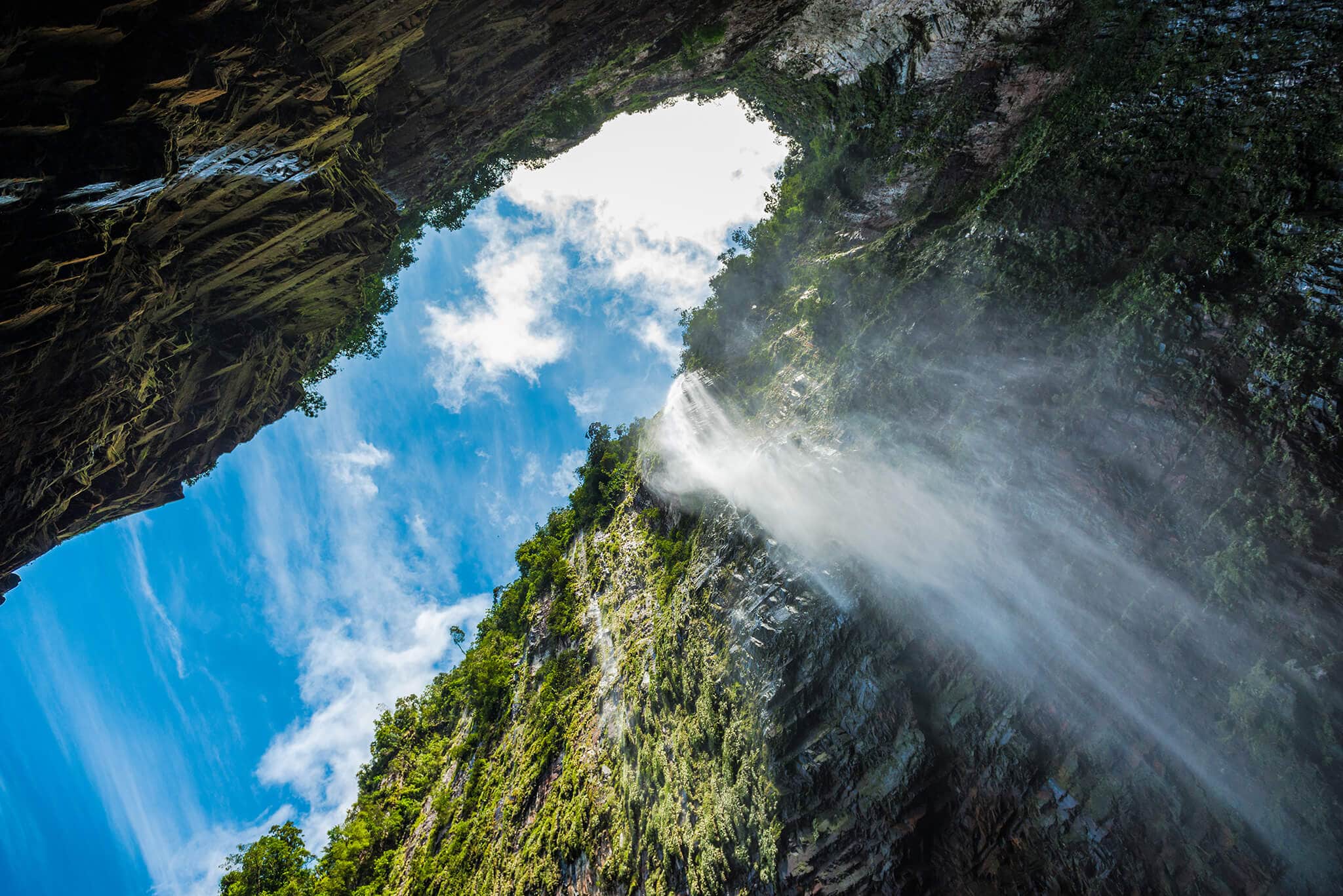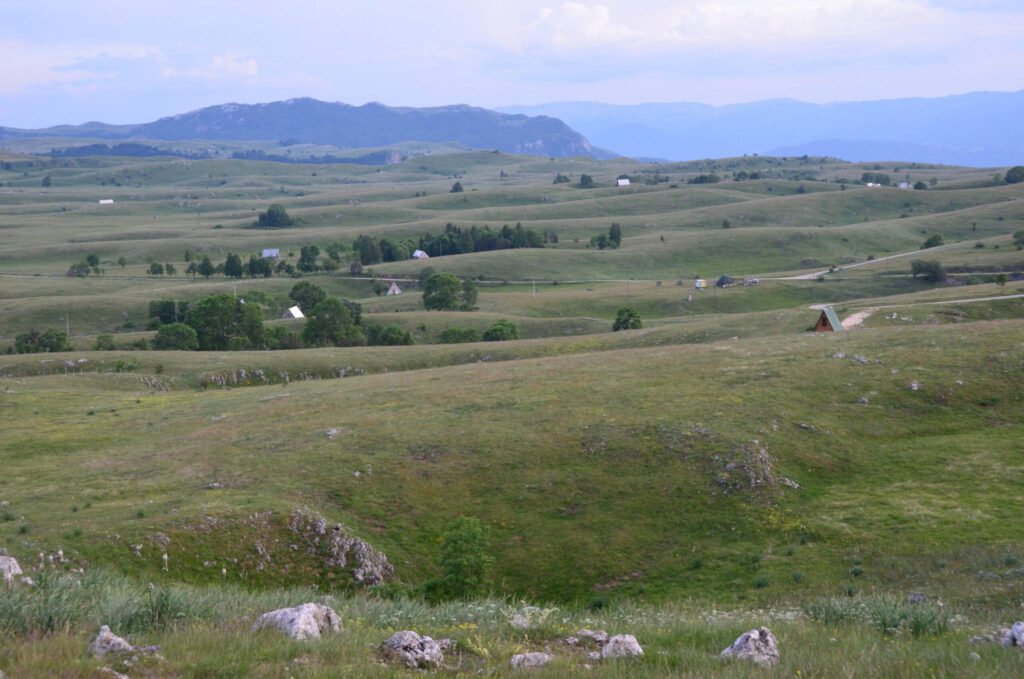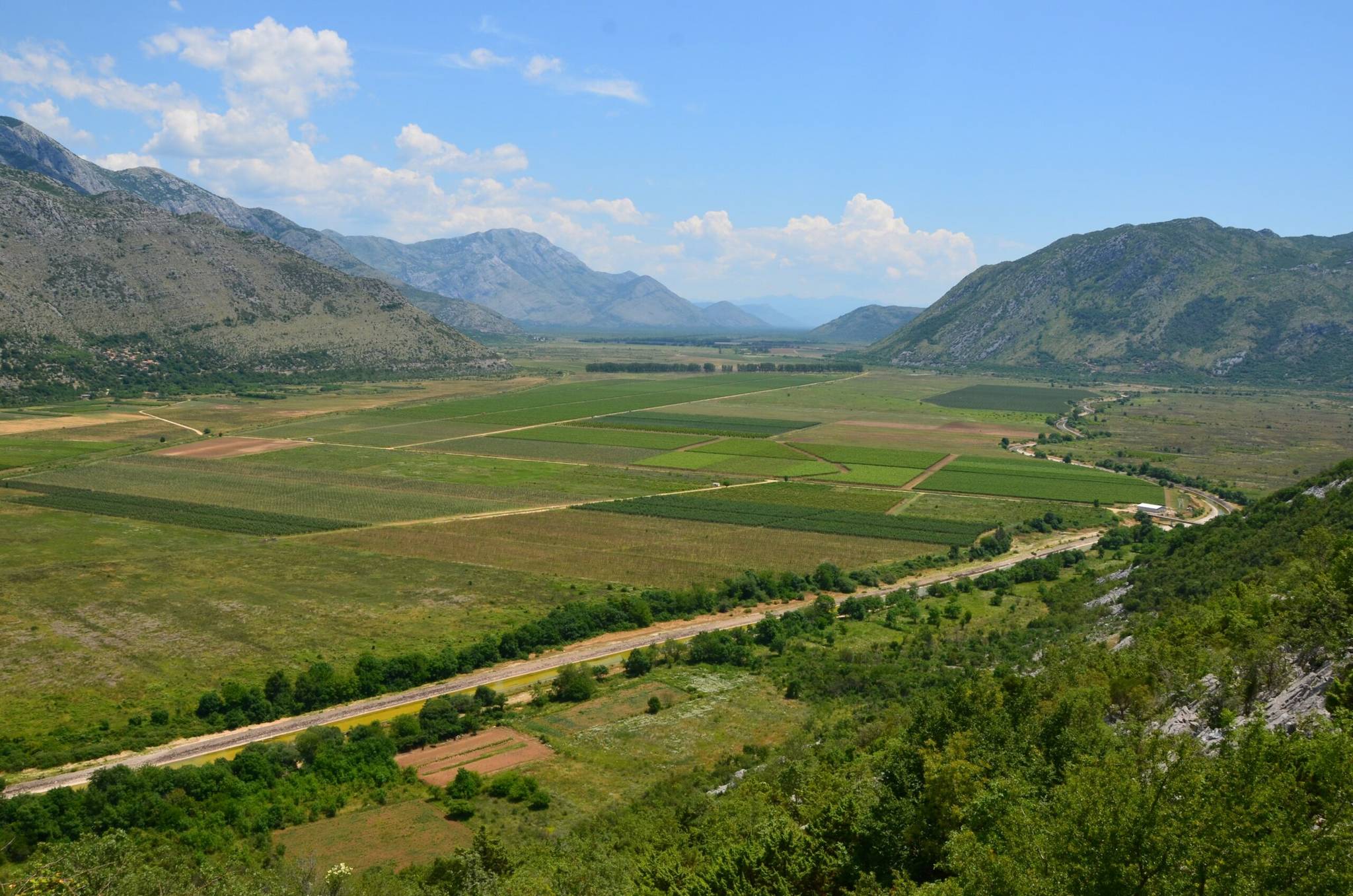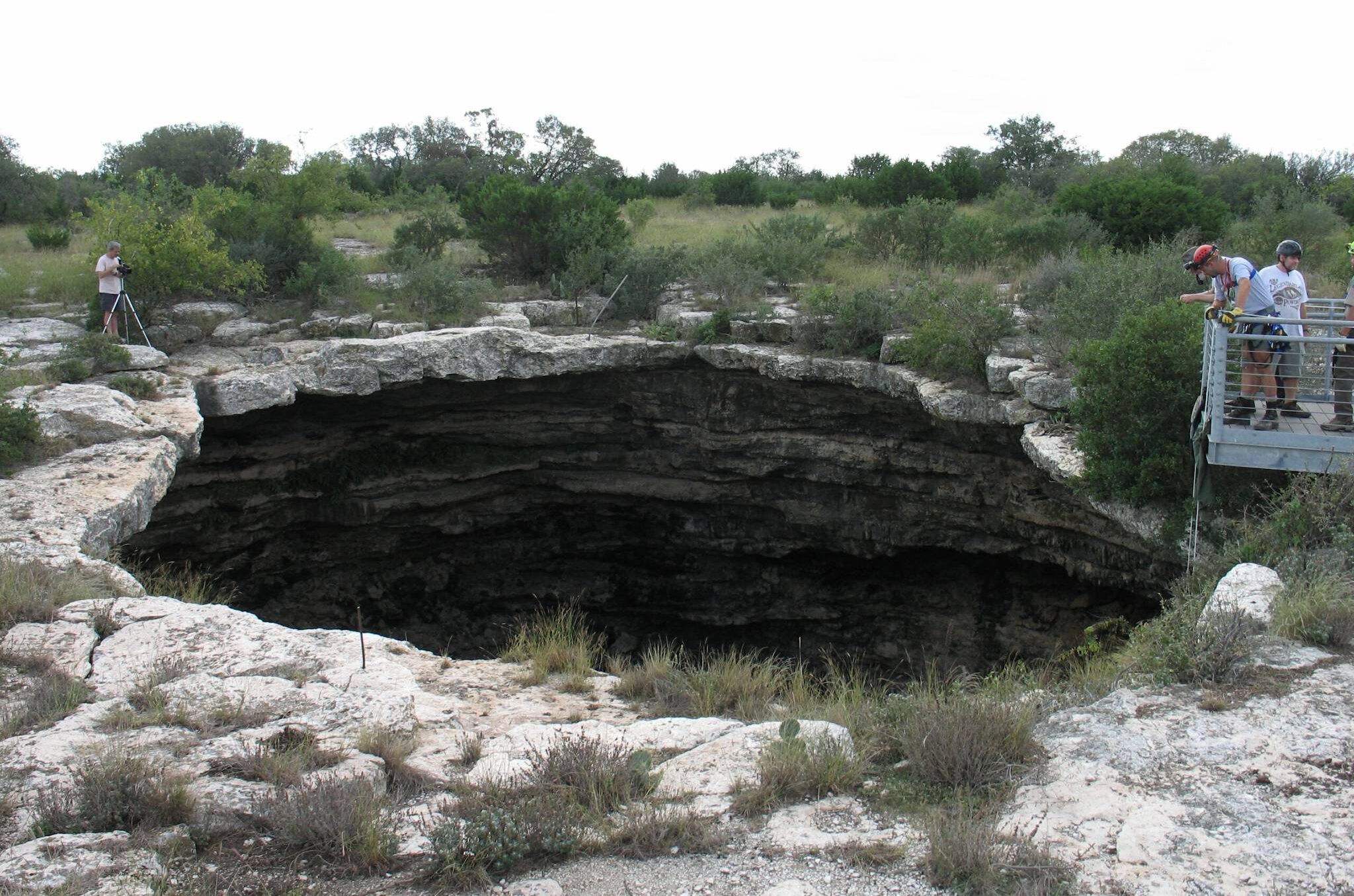Sinkholes

Sinkholes are the most recognized surface landform in karst. In many parts of the world, they are called “dolines.” They are depressions in the Earth and form by two primary processes: dissolution and collapse.
Solution Sinkhole
The most common type of sinkhole is the solution or dissolution sinkhole. Solution sinkholes are stable, do not harm buildings or roads, and are vitally important in replenishing karst aquifers. They form where water seeps into a fracture and dissolves the surface rock around the fracture into a slight depression. Continued flow enlarges the fracture and the depression. If the fracture becomes large enough for a person to enter, it is a cave.

The floors of most solution sinkholes are covered by sediment, which hides any underlying cave entrance or enlarged fracture. Water usually flows easily through the sediments into the karst aquifer. Sinkholes with thick clay covering their floors can hold water to create ponds. Small solution sinkholes are less than a meter in diameter and depth. The largest are a few kilometers wide, tens of kilometers in length, and a couple of hundred meters in depth. These are known as “poljes,” which means “field” because the deep soil floors are often rich cultivated fields.

Collapse Sinkhole
Collapse sinkholes form by the collapse of the ceiling of an underlying cavity or cave. Their walls are often vertical or undercut. They form by the collapse of either rock or soil.
Bedrock Collapse Sinkhole
Bedrock collapses occur where cave ceilings fall. The floors of bedrock collapse sinkholes are covered with the fallen rocks, which may block entry into the cave. These sinkholes are seen commonly in many karst areas, but they occur rarely in the span of human lifetimes.


Cover Collapse Sinkhole
Soil collapses, properly called suffosion or cover collapse sinkholes, are created by the movement of sediment underground. They form relatively rapidly, usually within several years but potentially within several months. These sinkholes result in billions of dollars in damage each year around the world, swallowing roads, buildings, and other property. They occur where at least several meters of soil or other sediment cover the bedrock. The soil or sediment moves downward by water seeping through the soil and washing the soil into underlying caves and cavities in the bedrock. As a result, cavities and caves form in the soil (the “cover” over the bedrock), which is not stable and collapses easily. These sinkholes range from less than a meter in diameter and depth to over 100 m in diameter and tens of meters deep, depending on local conditions.
While collapses may seem to form suddenly when they open to the surface, they usually form over long periods as the bedrock or soil cavities are created and enlarged to the point of collapse.